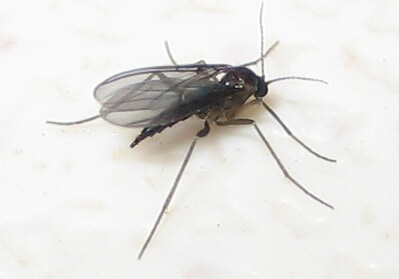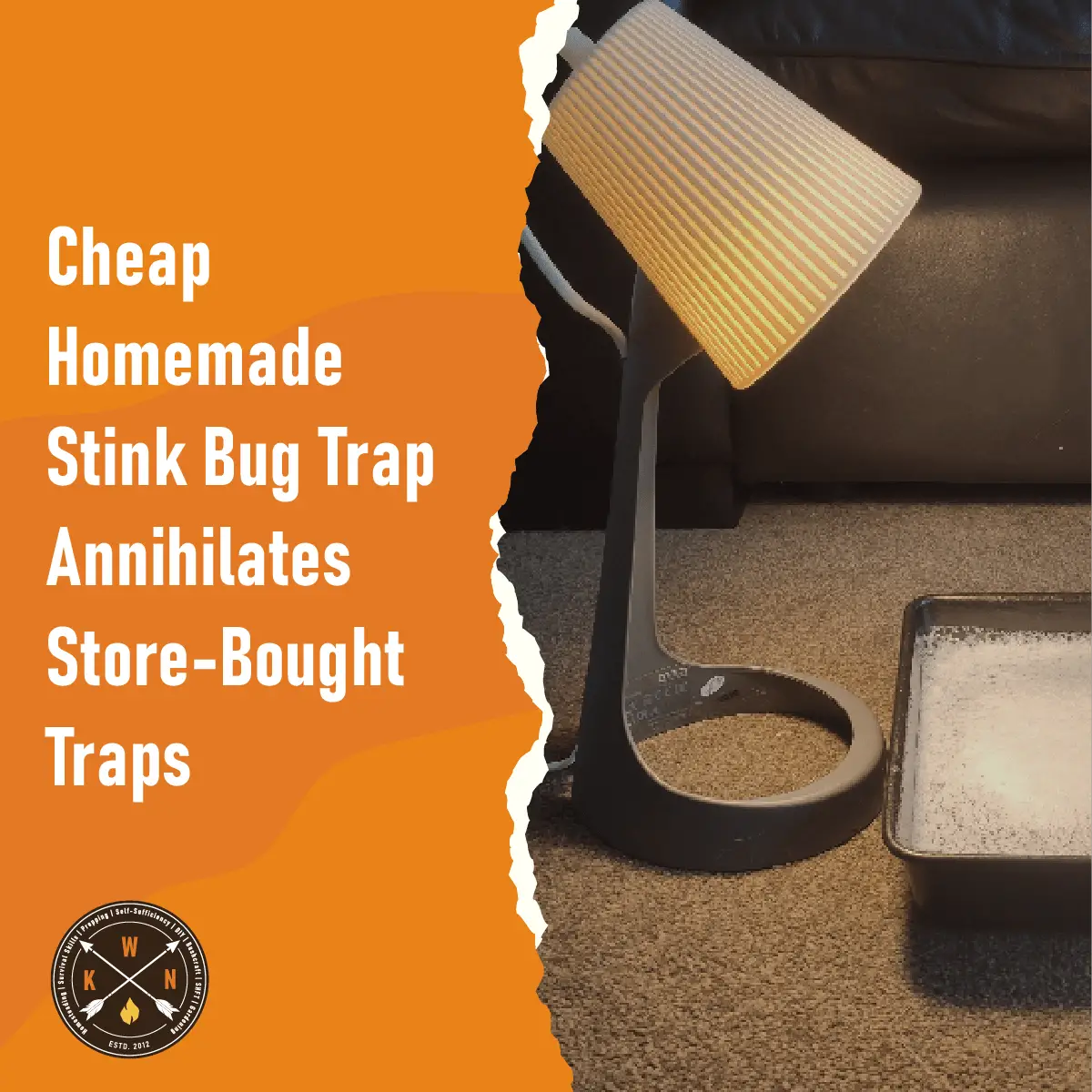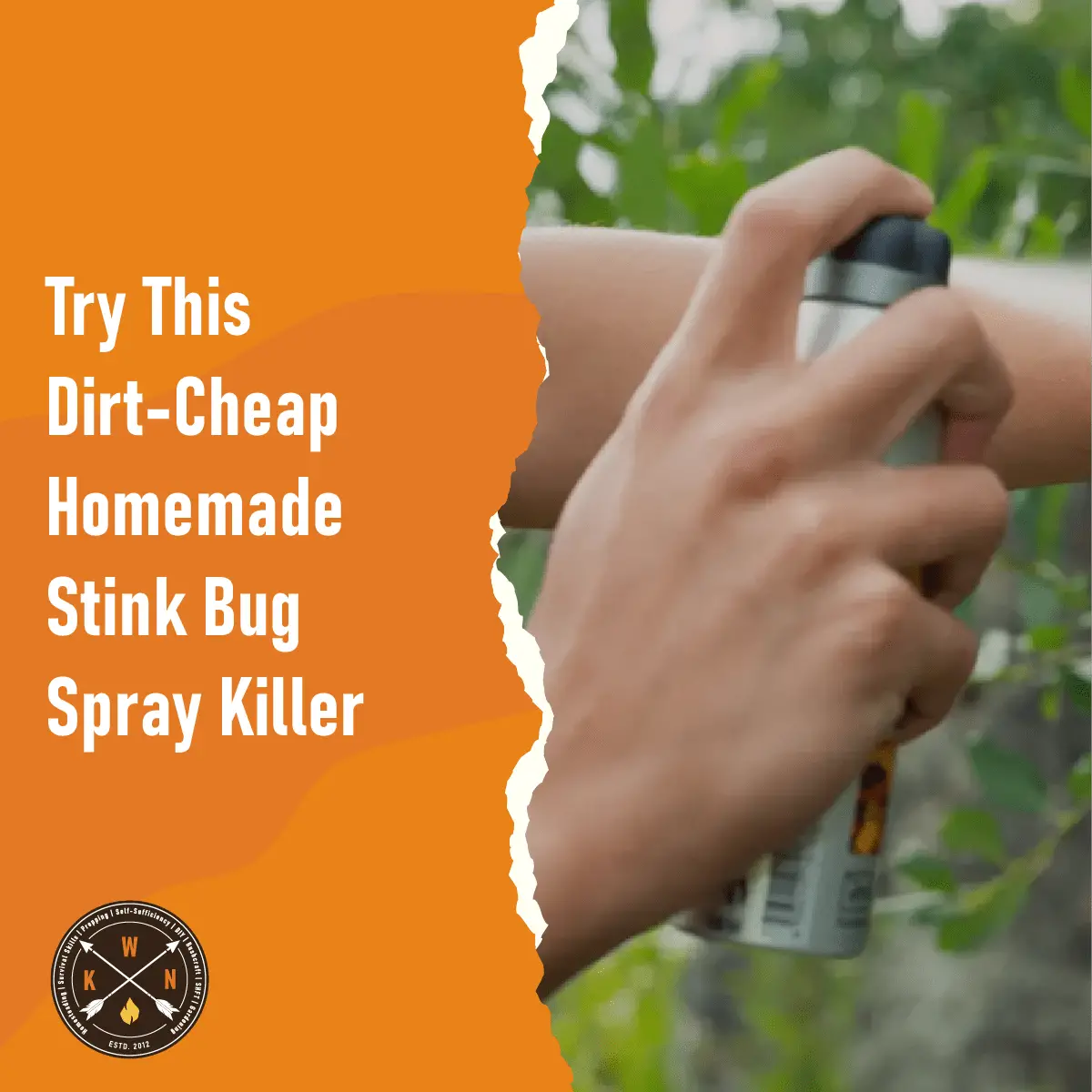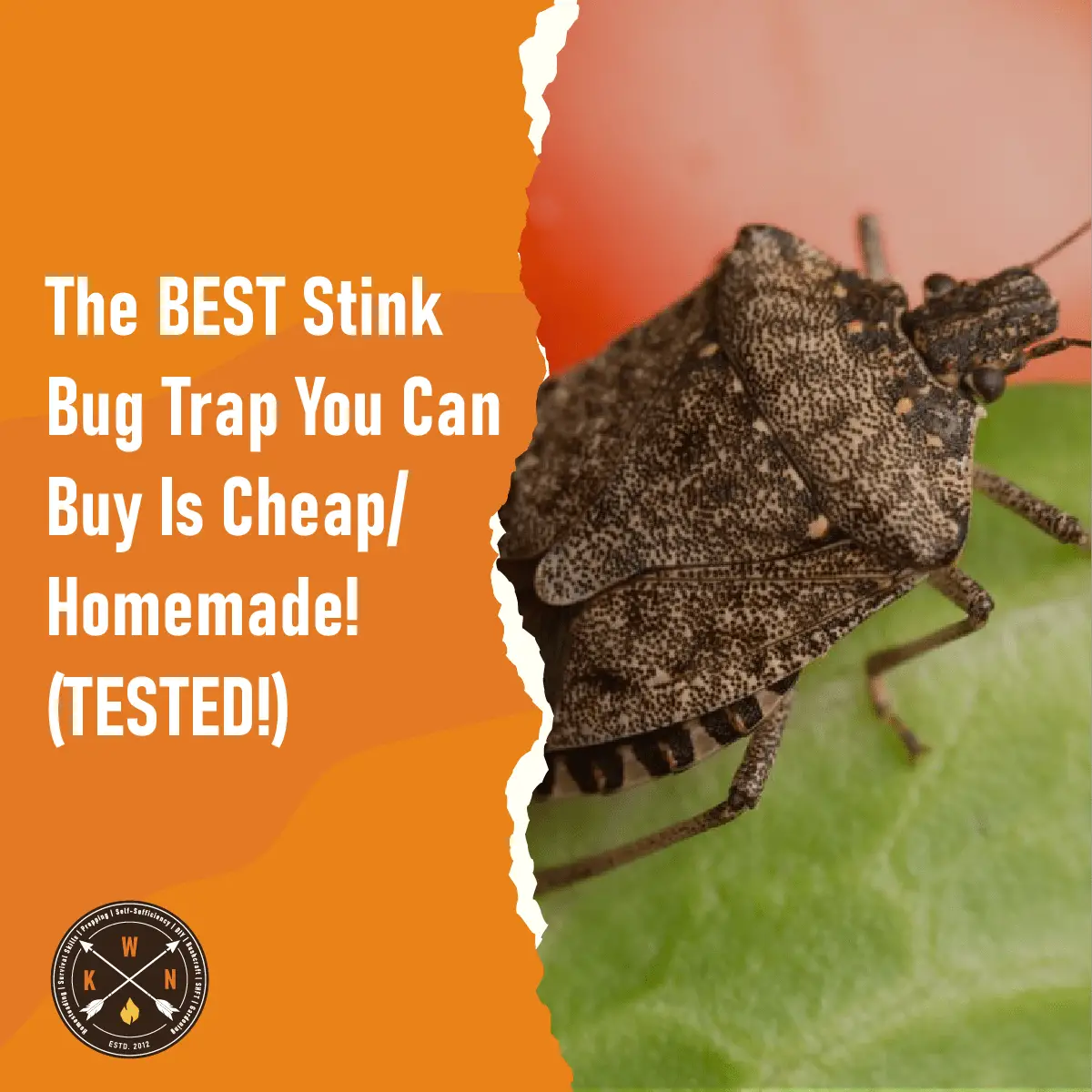Table of Contents
ToggleThe Homemade Gnat Traps
A quick and cost-effective way to get rid of gnats is by using a DIY homemade gnat trap. There are a few different DIY gnat traps, allowing you to use what’s in your store cupboard. Whichever trap you choose, making it is a simple process…
Homemade Gnat Trap With Vinegar
- Find a used can or jar. If you’ve got a mason jar, they work particularly well, but any sort of jar or can do.
- Fill your chosen jar or can with apple cider vinegar. If you don’t have any apple cider vinegar in your store cupboard, any type of vinegar will work well. If you’re using white vinegar though, we’d recommend adding a couple of drops of dish soap to make it extra appealing to those gnats (they’re especially fond of lemon!).
- Seal the lid, or cover with cling film if you don’t have a lid, and poke several very small holes in the top using a nail or a screw.
- Leave the jar in a place that seems to be popular with your gnats (if you have more than one problem area, you can make several jars to cover multiple locations).
- The gnats will fly into your DIY gnat trap but will be unable to leave it again! Once full up, simply empty out the contents down the sink and reuse it once again.

Homemade Vinegar Gnat Trap
Homemade Gnat Trap With Wine and Soap
- Take a small container such as a shot glass or a similar-sized cup.
- Fill the container about ¾ of the way full with red wine (any old red wine will do, the gnats aren’t fussy!).
- Add a couple of drops of dish soap to the wine.
- Stir the mixture gently.
- Then, simply leave the mixture out and watch the gnats flock to it! The gnats will try and sit on the liquid’s surface but, because the dish soap breaks the surface tension of the wine, the gnats will fall straight through and drown, making this a simple but deadly gnat trap.
Homemade Sticky Gnat Trap
- Cover the front of a yellow index card, or a similar-sized piece of card or paper, with a thin layer of honey. The key here is making sure that the card you use is yellow as that’s what attracts the gnats.
- Next, tape a chopstick, popsicle stick, or straw to the back of the card. Make sure that you don’t attach it to the sticky side!
- Place the stick in the soil next to an infested plant, with the honey-coated side facing outwards. The gnats will be attracted by the yellow card and the sweet honey and will become trapped in the honey.
- Once the yellow card is full of gnats, replace it with another homemade sticky gnat trap.
The Homemade Gnat Sprays
Homemade Gnat Spray For The Garden
- In a spray bottle, create a soap spray solution by mixing together 1 teaspoon of liquid dish soap (lemon works best!) with around 500ml of water. Try to avoid any dish soaps that are particularly harsh (antibacterial etc) as they may damage your plants.
- You can use this DIY gnat spray on the soil, leaves and stems of any infested plants with the soapy solution. This should kill gnats.
- Leave the solution to settle for an hour or so, then spray the leaves and stem of the plant with clean water to rinse off the soap.
Homemade Gnat Spray Killer For Indoors And Outside
Homemade Gnat Killing Spray Recipe
- 1/3 cup of rubbing alcohol
- 1 cup of water
- 1 teaspoon of dish soap
How To Make And Use
- Mix the water, alcohol and dish soap together and add to a spray bottle. Simply rinse out an old spray bottle and resue.
- You can use this DIY gnat spray indoors and outside on hard surfaces. You can try it on plants, soft surfaces and fabrics etc, but I would test it first to make sure it doesn’t cause any damage. Some plants and surfaces are more delicate than others.
- If you have a swarm of gnats flying around, you can also spray the flies directly
How To Get Rid Of Gnats At The Source
House Plants And Gnats
If you’ve got plants in and around your home, they should be your first suspect when identifying the cause of your gnat problem. Gnats love the moisture brought by the soil feeding your pot plants, particularly if you have a tendency to overwater them.
If your gnats seem to be based around your planting areas and pot plants, then they are most likely the source of the infestation. Here’s how to get rid of your unwanted guests…
- Firstly, let the infested soil dry out. Gnat eggs are often laid in damp, overwatered plants as the larvae need moist conditions to grow. If you let the top 2 inches of soil dry out, the eggs and larvae should also dry out and die.
- Next, re-pot your plants. Remove them from their current pots and plant them into fresh, clean pots with new soil. Make sure that you remove as much of the plant matter as possible, so as to avoid transporting any gnats, eggs, or larvae into the new pot.
- Once you’ve re-potted your plants, it can be worth covering the surface of the soil with a layer of sand to try and keep the gnats out.
You should also avoid over-watering plants and drain any excess water from your plant containers, as this will almost certainly attract gnats. Additionally, you can place gnats trap around the plants.
Funnily enough – you can actually plant some plants that help to repel gnats too!
Get Rid Of Gnats With Vegetable Oil
Gnats can often appear around your drains, particularly in the kitchen. To get rid of gnats from your drains, try using vegetable oil.
- Pour ¼ cup of vegetable oil into the drain, applying it around the edge of the drain so that it glides down the pipe and clings onto the sides.
- Cover the drain with strips of clear tape to seal it off.
- After a few hours, remove the tape. You should find that there are lots of gnats stuck to the bottom of the tape.
- Repeat until there are no longer any gnats hanging around your drains.
- You can also spray the DIY gnat killing spray in and around drains.
Trash
Gnats are attracted to decaying organic material such as fruit and food. Ensure that you regularly take out the trash and dispose of any rotting food or fruit straight away. This will remove the gnat’s food source and deter them from the area. Additionally, a homemade vinegar gnat trap can be very effective when used next to your trash cans.
You should also cover your trash cans with an airtight lid and clean them regularly.
If gnats are swarming around your bins, you can attack them directly by spraying them with the homemade gnat spray killer. Giving the area a really good misting around the swarm should do the trick.
Fruit
As well as disposing of any rotten or decaying fruit, you should also move your fresh fruit into the refrigerator or store it in carefully sealed containers. If you leave your fruit out in the open, gnats will be attracted to it before it even starts to decay.
Clean
No one’s suggesting that your house is untidy, and gnats certainly aren’t a sign of that, but if you are suffering from an infestation, it is definitely worth cleaning your house from top to bottom. This may help you to identify and eradicate the source of the problem.
In addition to this, make sure that you wash plates and dishes as soon as they are used. We’re all guilty of putting them to one side whilst we get on with our lives and returning to wash them later. But this will only serve to attract more gnats and encourage them to gather in your kitchen, so wash your dishes as soon as you’ve used them.
Doors and Windows
Check doors and windows to make sure that they are properly sealed and that there are no gaps through which the tiny gnats can sneak into your home.
If you need to leave windows or doors open for any reason, especially in the hot weather, think about getting a fly screen with a really tight mesh. This should help to keep your home gnat free.
You should also repair any holes in screens or cracks in walls. This will help to prevent them from getting in. Once again, a gnat trap can be used to help control gnats in these locations.
You can use the DIY gnat spray killer around doors and windows. Be a bit careful about spraying too much on painted surfaces though as it might damage the paintwork over time.
Dampness
Moist environments offer the perfect breeding ground for gnats. Check your home for damp patches and corners, these are particularly common in kitchens and bathrooms, or other rooms where there is a water source.
Regularly wipe down any damp spots you find using bleach or disinfectant and make sure that you never leave any moist towels or clothing lying around as these will attract the gnats.
Sinks
To get rid of gnats quickly and prevent them from appearing in the first place, pour diluted bleach together with a few drops of dish soap down each of your drains, plug them, and leave overnight. Rinse through with clean water and then repeat each week. You can also use the homemade gnat spray in and around sinks and drains.
Clothes & Body
There are many different types of gnats, some more irritating than others. Eye gnats are particularly annoying as they tend to swarm around your face, focussing on the eyes and mouth.
Like other types of gnats, eye gnats can be very difficult to control however, if you are unfortunate enough to find yourself being tormented by the creatures, try spraying your clothes and body with a mosquito repellent (make sure it’s one that contains DEET)
Alternatively, Make A Homemade Gnat Repellent Spray
- Take one tablespoon of vanilla and pour it into one cup of water.
- Mix together well and add to a small spray bottle
- Spray the homemade gnat repellent on your body. (Be careful around sensitive areas such as the eyes, nose and throat).
To avoid gnat bites…
- Wear long-sleeved shirts and pants when spending time near rivers, lakes, streams, and other wet areas.
- Whilst sitting on your porch, or in your yard, use a fan to blow the gnats away from you.
- Here are 3 home remedies for mosquito bites, that also help gnat bites as well.
Know Your Enemy – What Are Gnats?
Gnats, or to give them their Latin name Order Diptera, are small, winged insects that can cause a great deal of annoyance around the home and the garden – you’ve probably suffered an infestation at some time or another!
Commonly known as fruit flies, vinegar flies, or noseeums, gnats can be found in all sorts of locations and there are a number of different types. The most common type of gnat found within the home is the fungus gnat. These thrive around plants and lay their eggs in moist soil. Midgies (both biting and non-biting varieties) and gall gnats are other common species.
In the outdoor world, thousands of male gnats tend to assemble in large mating swarms, or ghosts, usually around dusk, filling the sky around them.
Gnats are small, and extremely annoying flies that are incredibly common across the world. They can occur anywhere where there is a water source, and they particularly enjoy moist environments. One of a family of insects that includes flies and mosquitoes, gnats are tiny flies sometimes called blackflies or midges.
Although many people think that gnats are baby flies, they are actually really small adult flies, often fruit flies. As well as being the cause of much annoyance, these little critters can also be biting gnats, causing irritation to humans and pets alike.
Whilst gnats may not be the most feared household pest, they reproduce extremely quickly and infest areas in their swarms, becoming a much larger problem than you might initially suspect.
 Close up of a fungus gnat
Close up of a fungus gnat
Whilst most gnats are harmless to humans, some gnats can also bite, often leaving painful sores and unpleasant swellings on their victims.
Where Do Gnats Come From?
Particularly common during warmer months, gnats are most often found around fresh produce and food, as well as moist areas such as over-watered plants and refrigerator drain trays.
Gnats can appear both indoors and outdoors and are attracted by a number of factors including:
- Drains and sinks
- Remnants of food
- Rotten fruits and decaying food
- Wet floors and damp patches
- Houseplants
- Pets
How To Get Rid Of Gnats Summary
We have covered a lot of ground in this detailed post. Gnats can be a real problem during the summer months. To effectively deal with them, a combination of the DIY gnat traps and sprays listed above works best.
Make some homemade gnat traps. Experiment with the different version of the DIY gnat traps to see which one works best for you, then place these gnat traps in the problem locations. In addition to the DIY gnat traps, make up a bottle or two of the homemade gnat spray killer to have handy for whenever gnats are swarming and causing a problem. A good misting of the spray should kill off a swarm of gnats pretty quickly.
DIY gnat traps and sprays aside, be sure to note the additional advice on how to prevent a gnat infestation to begin with. Taking some of these preventative measures can make all the difference.





